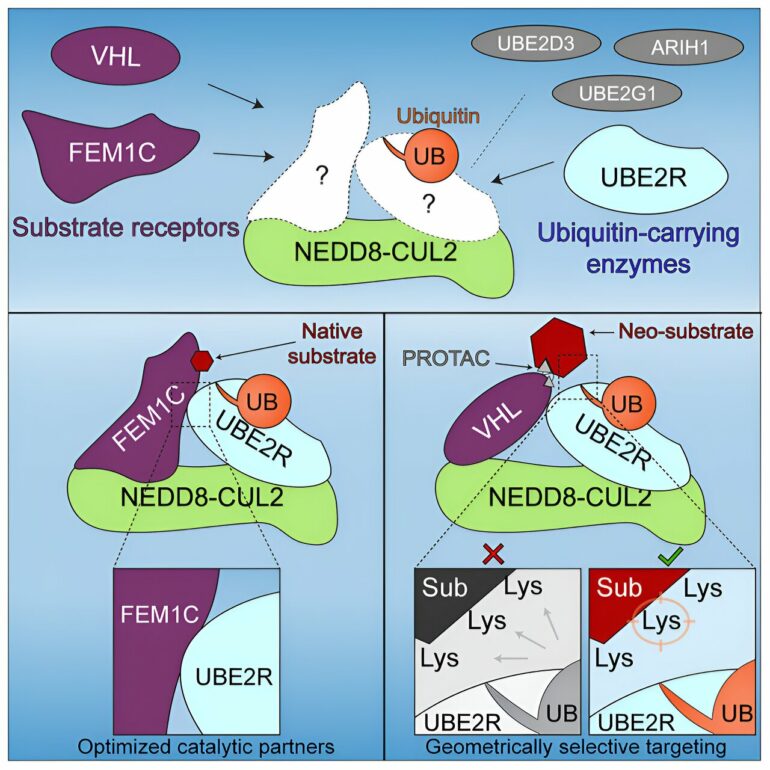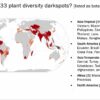Are you sick and tired of getting sick and tired? A UNLV-led research team is exploring whether the reason we sometimes feel ill in the first place is because our body’s cells suffer from trash that accumulates within them.
Gary Kleiger, professor and chair of the department of chemistry and biochemistry at UNLV, along with Brenda Schulman, director of the Munich-based Max Planck Institute of Biochemistry, and their teams are working on ways to help our bodies hunt down and destroy disease-causing proteins.
They’re the authors of a groundbreaking new study, “Cullin-RING ligases target substrates with geometrically optimized catalytic partners” published in the journal Molecular Cell, that furthers our understanding of how enzymes called cullin-RING ligases (or CRLs) help cells get rid of proteins that are no longer needed. The results also point to a potential Achilles heel for proteins that make us ill.
“Cullin-RING-ligases (CRLs) are complex nanomachines that are crucial for the cell’s intricate disposal and recycling systems,” said Schulman. “CRLs tag defective, toxic, or superfluous proteins with a small protein called ubiquitin, and mutations or malfunctions impairing CRLs are often associated with diseases, like developmental disorders or cancers.”
The research team argues that because CRLs have key functions in maintaining the well-being of our cells, it is of fundamental importance to define and understand their molecular mechanisms.
“This is extremely important work. For instance, during the COVID-19 lockdowns, some may recall that garbage piled up on the sidewalks of at least some cities, causing a health crisis,” says Kleiger. “The same is true for our cells, and human disease may occur at least in part due to our disposal systems not working properly.”
Knowing more about how cells are using these processes to shed unneeded or unwanted materials can potentially accelerate drug discovery studies.
“Researchers have already made amazing progress towards ‘hijacking’ CRLs to hunt down and destroy disease-causing proteins. Many believe this is the next major innovation in drug discovery” says Kleiger. “And by further uncovering how CRLs function in our cells, scientists can employ this knowledge to better understand human disease and to help this novel drug discovery platform.”
CRLs function by labeling proteins targeted for destruction with a small protein called ubiquitin, and Kleiger’s lab was the first to show that the rate of ubiquitin transfer approaches speeds that rival some of the fastest known reactions in biology. The results in the current work further show us how cells are able to be selective about what they get rid of, and proteins aren’t trashed by accident.
Over the last 20 years, thousands of scientists have spent billions of dollars researching a therapeutic concept to treat human disease by marrying enzymes that participate in protein destruction to proteins that cause disease.
CRLs are the overwhelming choice of drug discovery specialists to promote the destruction of disease-causing proteins, and CRL-dependent drugs are already in the clinic and may achieve FDA approval within one to two years. The work by Kleiger, Schulman and their colleagues moves the needle on progressing toward tangible solutions.
The new study is only the latest by the Kleiger and Schulman labs to show snapshots of the CRLs during the process of labeling proteins for destruction. Earlier this month, Kleiger, Schulman and collaborators published a paper in the journal Nature Structural & Molecular Biology that allowed scientists to visualize the precise labeling mechanism, catalyzed by the CRLs, for the first time.
More information:
Jerry Li et al, Cullin-RING ligases employ geometrically optimized catalytic partners for substrate targeting, Molecular Cell (2024). DOI: 10.1016/j.molcel.2024.01.022
Provided by
University of Nevada, Las Vegas
Citation:
Learning how cells dispose of unwanted materials is key to potential new therapeutics, say scientists (2024, February 21)



